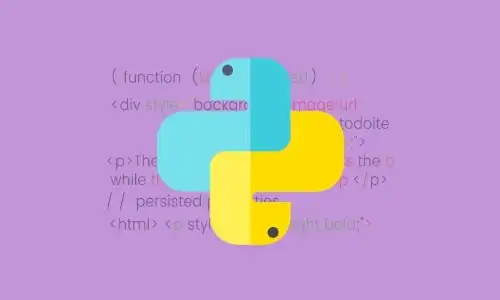
Learn the basics of
Python Programming
Your first module in the Python Programming course serves as an introduction to this field, suitable for everyone as it requires no prior background in programming. Python is one of the easiest languages to learn as it closely resembles English! The demand for this skill increases each year, and after this module you will learn the core concepts and functions of this powerful language.
89.8K
Graduates
All levels
Certified

Course details
MODULE 1
Diploma in Python Programming
MODULE 1
Diploma in Python Programming
1.Welcome to Python
This lesson will give you a high-level description of what is Python programming all about, and why it is the best language for beginners. You will be familiarised with with different Python support group sites, which even the most seasoned developers turn to for guidance. A demo showing how to install Python in your machine and then write a basic Python script will be covered.
2.Python Basics
An introduction to basic datatypes (strings, numbers and boolean datatypes) will be given. Variables and their important use cases in Python programming will be discussed. Lastly, other basic Python Syntax, such as how to write comments in Python programming language will be explored.
3.Decision-making
We will cover different types of decision-making statements in Python programming language, and how they are associated to boolean datatypes.
4.Control flow and decision making
Here we will cover 3 types of loops in Python, which will be For Loops, While Loops, and Nested Loops.
5.Python Data Types
An extensive in-depth description of Python data types will be given. We will discuss how to store, manage, extract and manipulate data stored in some of these data types.
6.Python List data types
Further discussion on data types will be continued, and the differences between mutable and immutable data types will be elaborated.
7.Exceptions and Error Handling in Python
There are two kinds of errors in Python, syntax error and an exception. We will discuss what is an exception error, and how to handle it using raising exception and assertions statements.
8.Python Dictionary
Here we will show how to write control flow statements inside list, dictionary and tuples. We will elaborate on the efficiency and benefits of writing a program in this form.
MODULE 2
Intermediate in Python Programming
MODULE 2
Intermediate in Python Programming
1.Setting up Anaconda IDE and Python Functions
This lesson will let you know how to setup, install, and get started with the Anaconda IDE Jupyter notebook which will be another platform for python programming. Using this platform, students will learn to define functions in python with the help of different syntax.
2.Advanced Functions
In this lesson, we discuss Python functions, what they are, and the syntax associated with writing a function in the Python programming language. Basically functions can be divided into user-defined and built-in functions. We will mostly discuss built-in functions such as Lambda, Filter, and Map functions coupled with their use cases.
3.Python Libraries
This lesson will let you understand the different libraries available in python which can be used in the development of a variety of applications of Python. These libraries are used in Data science, machine learning, and some of the high-end AI applications
4.Closures
This lesson will define what Python closure is, then we will use nested functions and nonlocal variables to demonstrate the functionality and purpose of Python closure in programming.
5.Decorators
In this lesson you are going to be introduced to metaprogramming using decorators as an example. We will show how decorators can be used to add functionalities into existing code/programs.
6.Generators
In this lesson we will look at Python generators, show how they can be used to create iterations. We will use normal functions (user-defined) together with Python Yield statements to achieve this.
7.Modules in Python
In this lesson, you will learn how to create and import custom modules in Python. Also, we will discuss and show different techniques to import and use custom and built-in modules in Python.
8.Files input and output (I/O)
In this lesson, we will discuss Python file operations, how to open files, read from files, write into files and close them.




















































